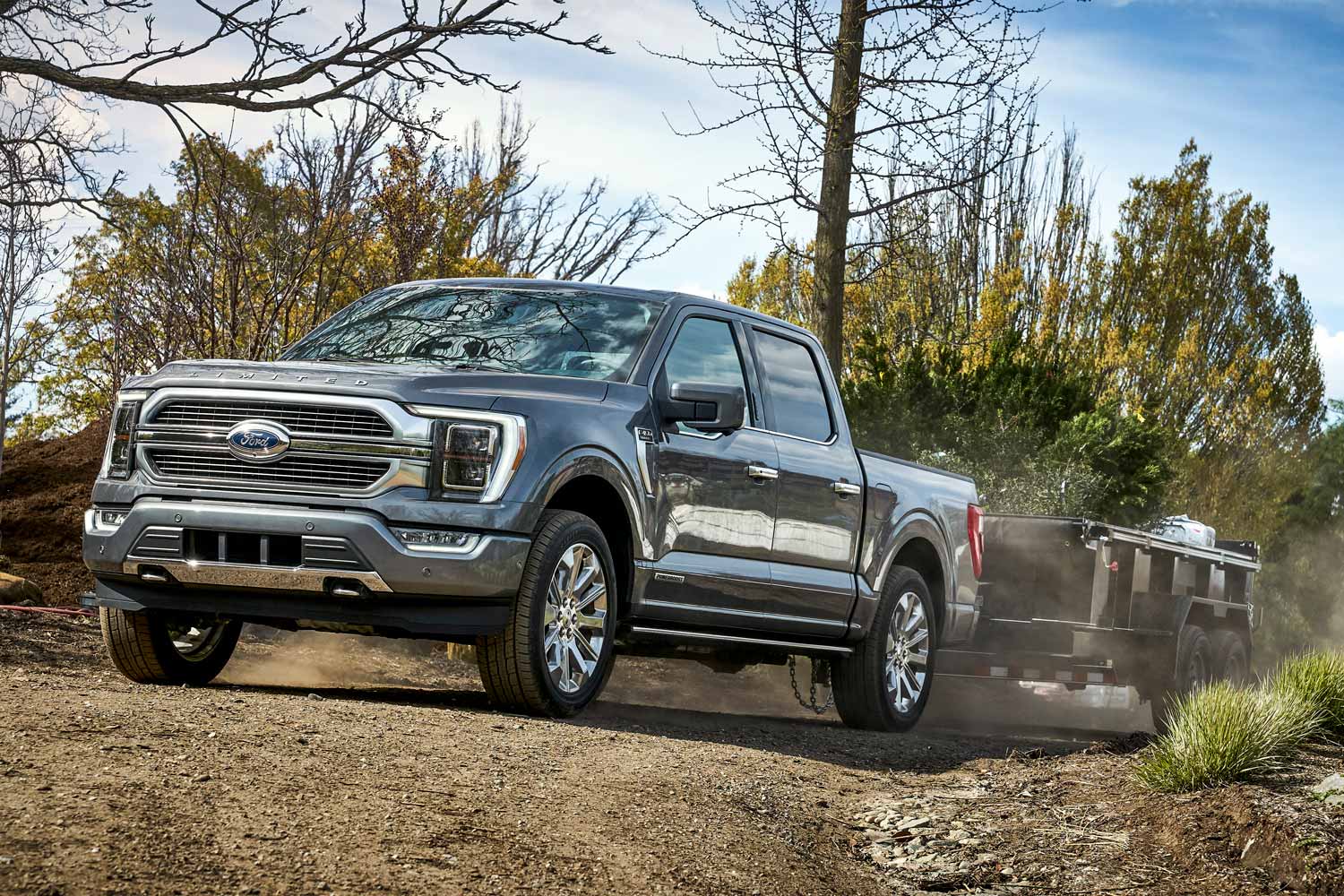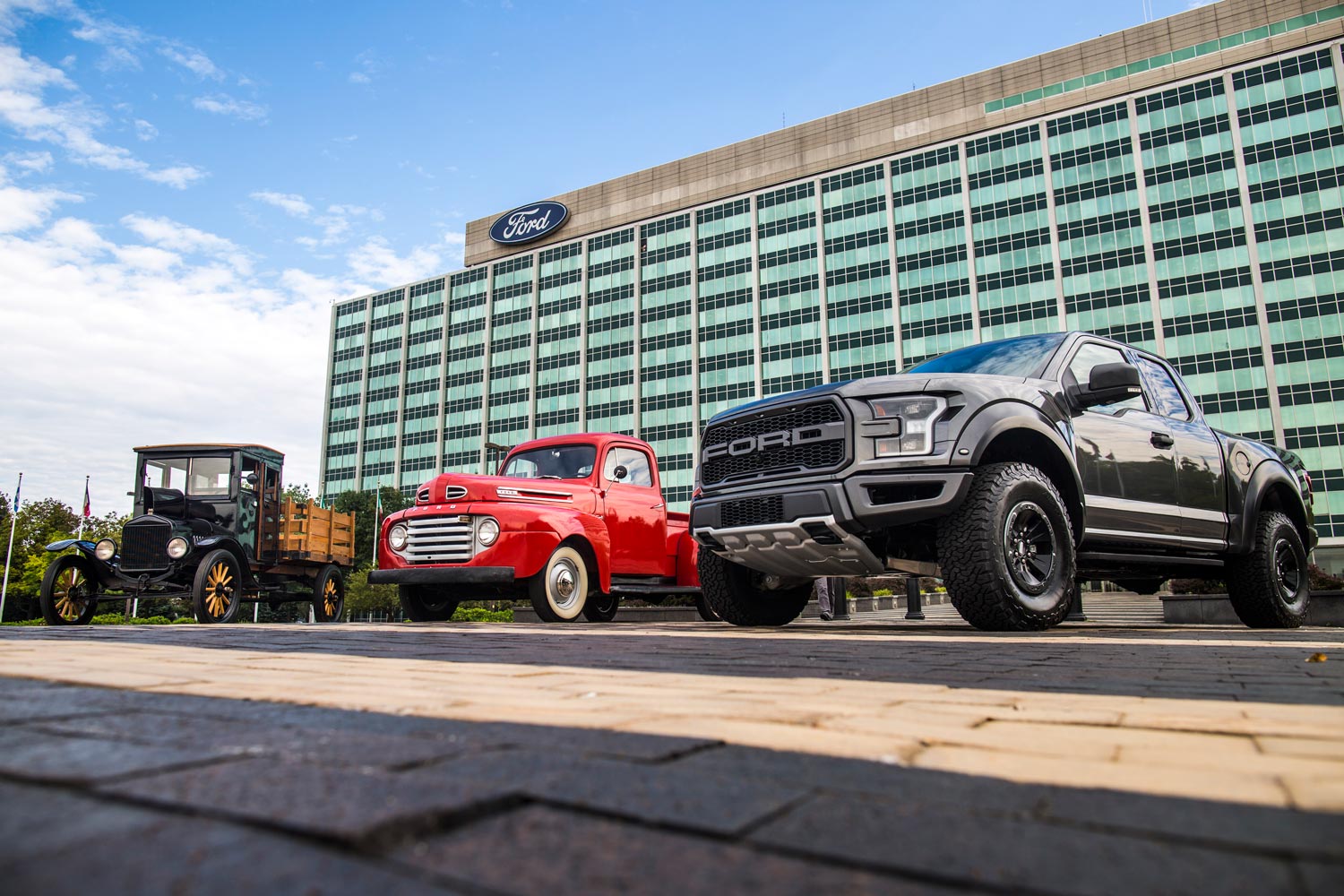What Is a Half-Ton Pickup Truck?
Cargo capacity is at the root of this popular light-duty truck classification.
 Ford
Ford
You'll find full-size trucks referred to as "half-ton" models in marketing materials and popular culture. This term can seem puzzling since it's clear that these enormous beasts tip the scales with a weight much higher than what the phrase suggests. Understanding the definition of a half-ton truck means dipping into the history of pickups and then contrasting that heritage against the modern method used to divide these vehicles up into their respective categories.
Half-Ton Pickups Have Historical Origins
Initially, a truck's weight rating was tied to how much cargo it could haul in its bed, a practice that dates back to the earliest days of pickups. The naming convention can be traced even deeper into military history when cargo tonnage was a key consideration for classifying support vehicles used in armed forces operations. When trucks became widely available more than 100 years ago, the ton — 2,000 pounds — was already a widely accepted measure of payload capacity for ships and rail cars and was easily borrowed for the new class of vehicle.
 Ford
Ford
According to this standard, a half-ton truck could carry about 1,000 pounds without issue. The verbal shorthand became the common way of referring to a particular class of truck and what kind of work it was capable of. While payload capacities grew over the decades, truck builders continued to organize their lineups using these old-school criteria: one-ton trucks at the top of the heavy-duty (or HD) segment, three-quarter-ton trucks in the middle, and half-ton trucks as the entry point.
Today, Half-Ton Refers to Size, Not Capability
Today, most half-ton trucks have payload capacities ranging from just over 1,000 pounds up to more than 2,000 pounds, depending on how they are equipped. For example, the bestselling 2023 Ford F-150, with the optional 5.0-liter V8, is capable of hauling up to 3,310 pounds in the bed. Technical classifications used by federal regulators instead rely on gross vehicle weight rating (GVWR), or the maximum hauling/towing capacity of the platform to organize trucks. Most modern half-ton trucks fall into either Class 1 (GVWR of 6,000 pounds or less) or Class 2 (GVWR maximum of 8,500 pounds), with some electric half-tons tipping into Class 3 (GVWR between 8,501 pounds and 10,000 pounds).
Half-Ton and Light-Duty Trucks Are the Same
The half-ton classification typically refers to full-size trucks as compared with smaller midsize — such as the Toyota Tacoma or the Rivian R1T — or compact pickups, including the Hyundai Santa Cruz or Ford Maverick. However, other weight classifications divide up the full-size truck world, so the term "light-duty" truck is often applied to half-ton pickups. Light-duty sets them apart from their heavy-duty three-quarter-ton and one-ton siblings, which tend to be much larger, more powerful, but also less efficient.
Several Companies Build Half-Ton Pickup Trucks
The traditional Big Three U.S. automakers currently offer their version of a half-ton truck. The Ford F-150, the Chevrolet Silverado 1500 and GMC Sierra 1500, and the Ram 1500 are all considered half-ton trucks. You will notice the similar naming structure, indicating their light-duty classification (with 250 or 2500 reserved for three-quarter-ton trucks and 350 or 3500 for full-ton models). The industry also classifies the Toyota Tundra and the Nissan Titan as half-ton trucks.
Written by humans.
Edited by humans.
 Benjamin Hunting
Benjamin HuntingBenjamin Hunting is a writer and podcast host who contributes to a number of newspapers, automotive magazines, and online publications. More than a decade into his career, he enjoys keeping the shiny side up during track days and always has one too many classic vehicle projects partially disassembled in his garage at any given time. Remember, if it's not leaking, it's probably empty.
Related articles
View more related articles